Spruce vs. Fir vs. Pine Trees: What’s the Difference?
-
Kristin Hitchcock
- Last updated:
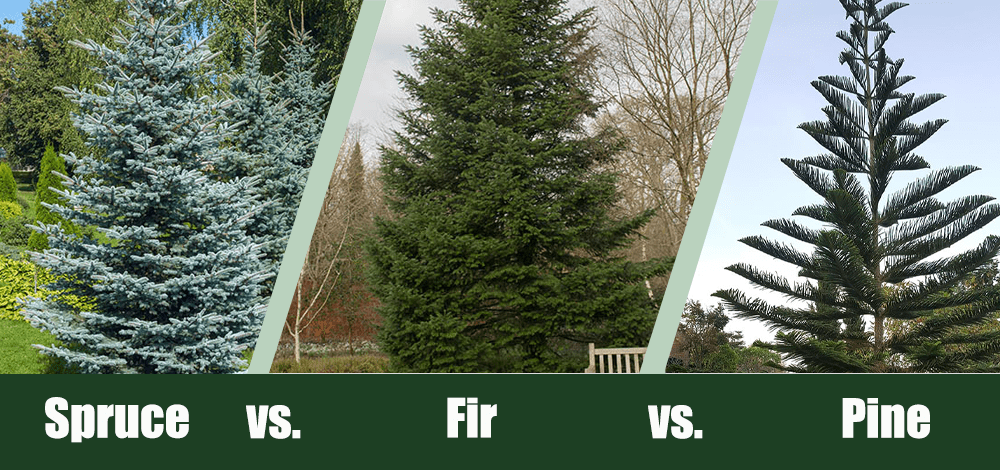
Identifying trees can be challenging. There are whole classes in college specifically about understanding and identifying trees, so it isn’t unusual to feel a bit overwhelmed by the subject. However, a small amount of background knowledge is all you typically need to know to correctly identify spruce, fir, and pine.
While trees may look quite similar on the outside, there are huge differences between them. Spruce, fir, and pine trees are not interchangeable. Whether you’re trying to ID a tree in nature or choose an option for your yard, there are several aspects that are vital to selecting the correct tree.
Below, we’ve taken a look at the differences between these trees and discussed some of their more important characteristics.
Overview of Spruce
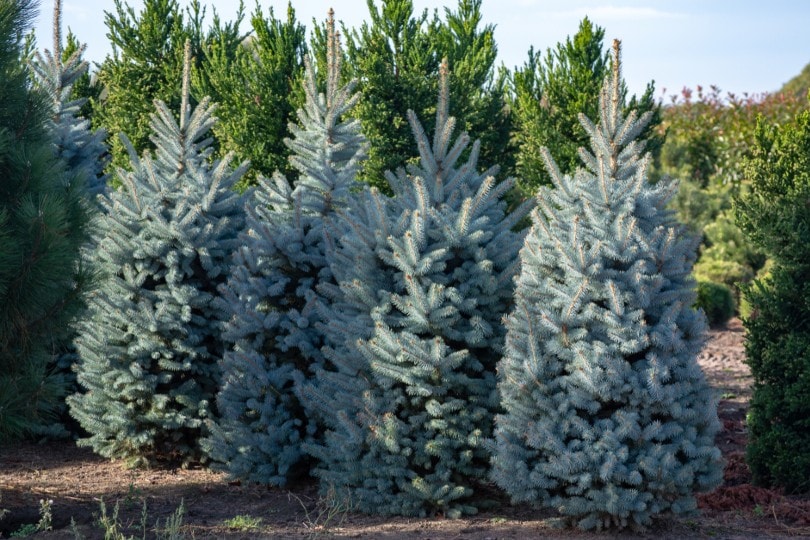
How to Identify Spruce
Spruce needles are attached directly to the branch. They do not come in clusters like pine trees. They are also obviously square, which helps you tell them apart from Fir trees. You can tell if a needle is flat or round by rolling it between your fingers. If it obviously has four sides, then it is a spruce needle.
Furthermore, spruce needles are attached to small, woody projections. If you pull a needle off, this projection often comes with it. For this reason, spruce trees also have bumpy bark, especially where needles have been cleared away. Otherwise, spruce does not have any identifying bark characteristics.
Spruce cones have rather small scales that can be flexed between your fingers, as they are not as rigid as pinecones.
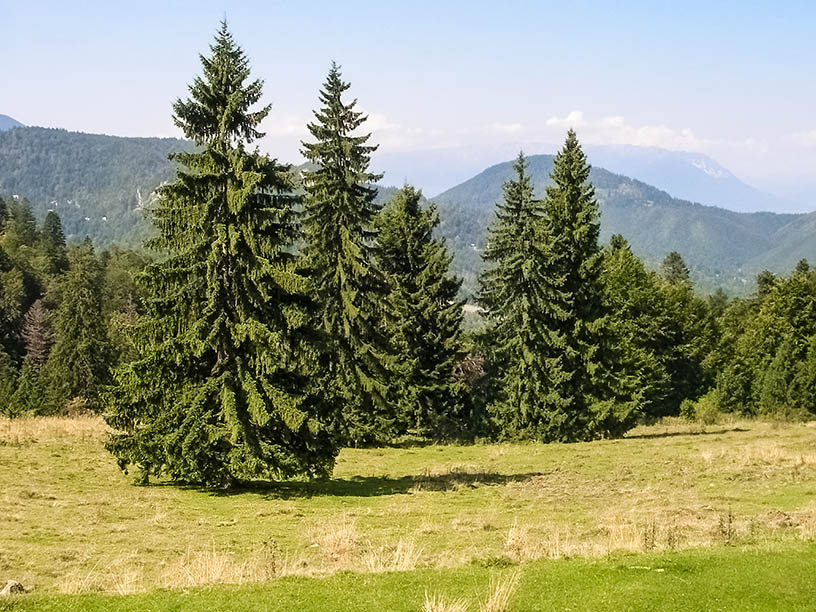
Uses
Spruce trees are utilized for a variety of human ventures. The wood is utilized as a building material, ranging from crates to highly specialized uses, like aircraft. This tree does not retain any weather resistance or pest resistance after being cut. Therefore, they are usually only used indoors. If left outdoors, spruce wood only lasts about 12–18 months.
Sometimes, spruce wood is broken down and made into paper. It contains very long wood fibers, which bind together and create a fairly strong paper. Plus, these fibers are easily bleached into white.
Occasionally, spruce shoots are harvested for their high vitamin C content. Once upon a time, pirates used these spruce shoots to create alcohol with high vitamin C content, which prevented scurvy. Today, the shoots are more likely to be made into essential oil, which smells very strongly.
In some areas, spruce buds are used in ethnic cooking. They can be boiled down into sugar or turned into tea. These substances will contain a significant vitamin C level.
 Overview of Fir
Overview of Fir
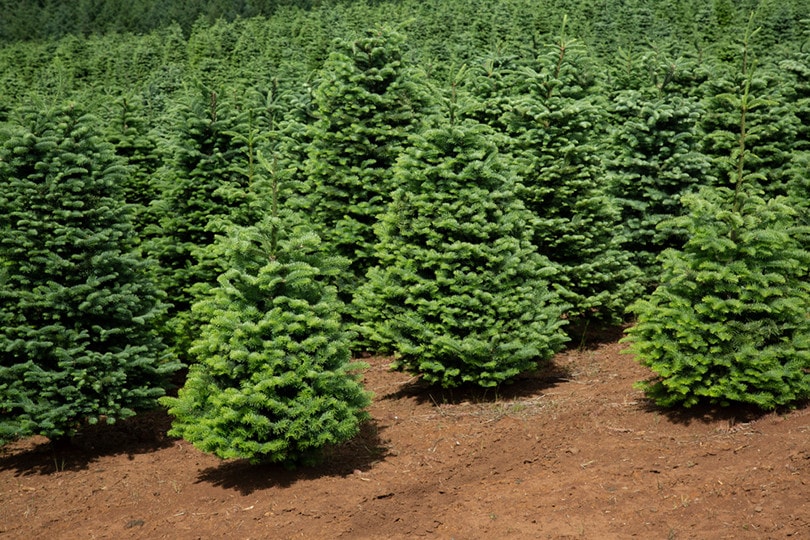
How to Identify Fir
The easiest way to identify fir trees is to pull off a needle and roll it between your fingers. Fir needles do not roll easily between the fingers, unlike spruce and pine. Plus, they do not grow in clusters like pine, giving another clue.
Fir needles are also not very sharp to the touch. Usually, the bark of the tree is rather smooth, as they do not grow projections over their surface like spruce trees. However, the bark is not always an accurate identification feature, as it can vary depending on the climate. Older trees may have rough bark.
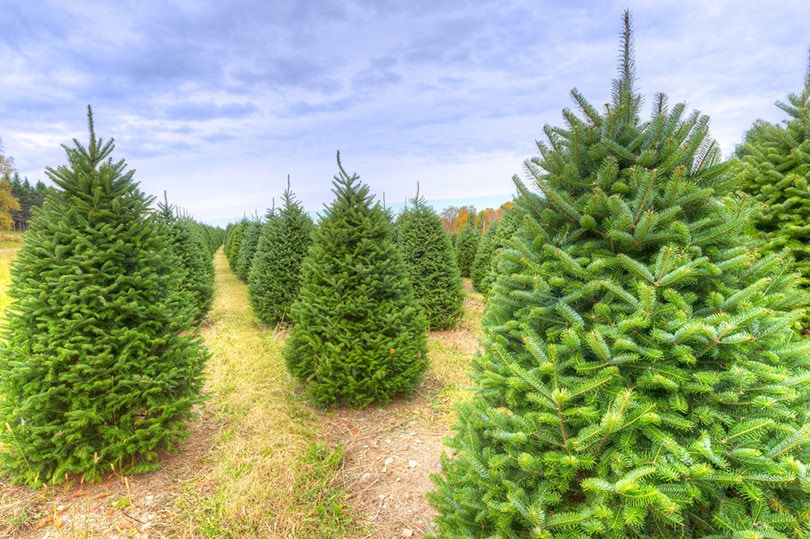
Uses
Fir lumber is not particularly sought after or popularly used. It remains unsuitable for construction use. Instead, fir lumber is usually made into a pulp or plywood and is rarely kept as-is.
After being cut, this wood has no insect or decay resistance. It will not last long when kept outdoors. Therefore, anything made of fir must be kept inside unless sealed and treated properly. Firs are commonly utilized as Christmas trees, as they are aromatic and “smell like Christmas.” Plus, their unsuitability for other tasks makes them pretty inexpensive.
There are some fir species that are used for decorative purposes. Many have brightly colored cones and bright foliage. Plus, their softer needles make them more desirable.
 Overview of Pine
Overview of Pine
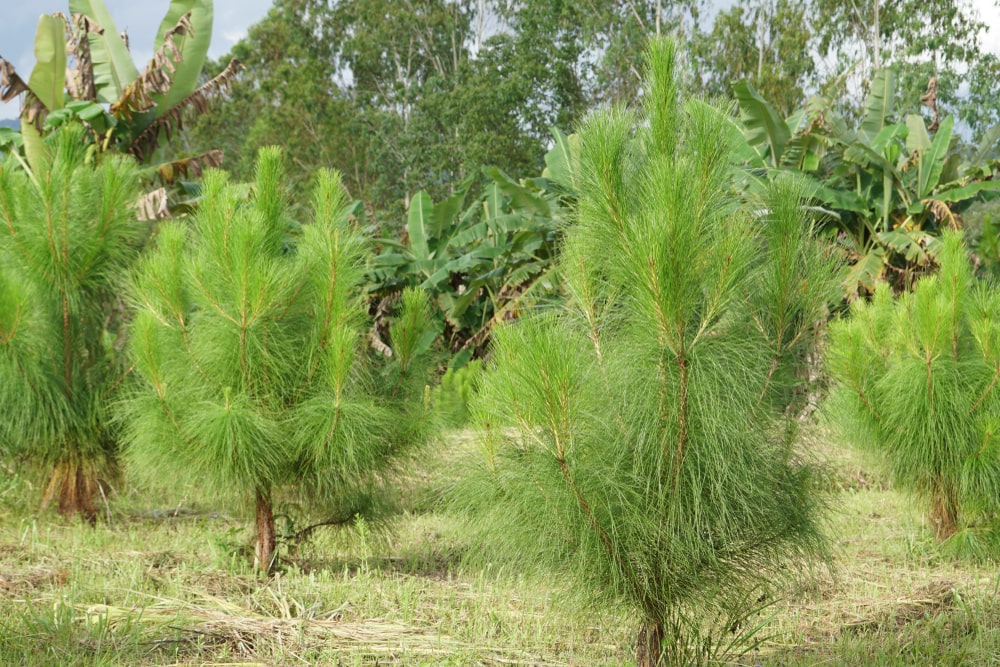
How to Identify Pine
Pine trees are easy to identify as their needles grow in bunches. Depending on the species, the needles may attach to the branch in bunches of two, three, or five. For this reason, you can typically ID pine trees at a glance.
Furthermore, pinecones are extremely stiff and woody. They will break instead of bend and may even be pointy. Usually, these pinecones represent the more “traditional” concept of a cone. The cone size is not a reliable indicator of tree type, as some pinecones are extremely small.
Pine bark usually starts off smooth and then becomes gnarled with age. Many species also redden with age, so the bark is not an easy identifying characteristic.
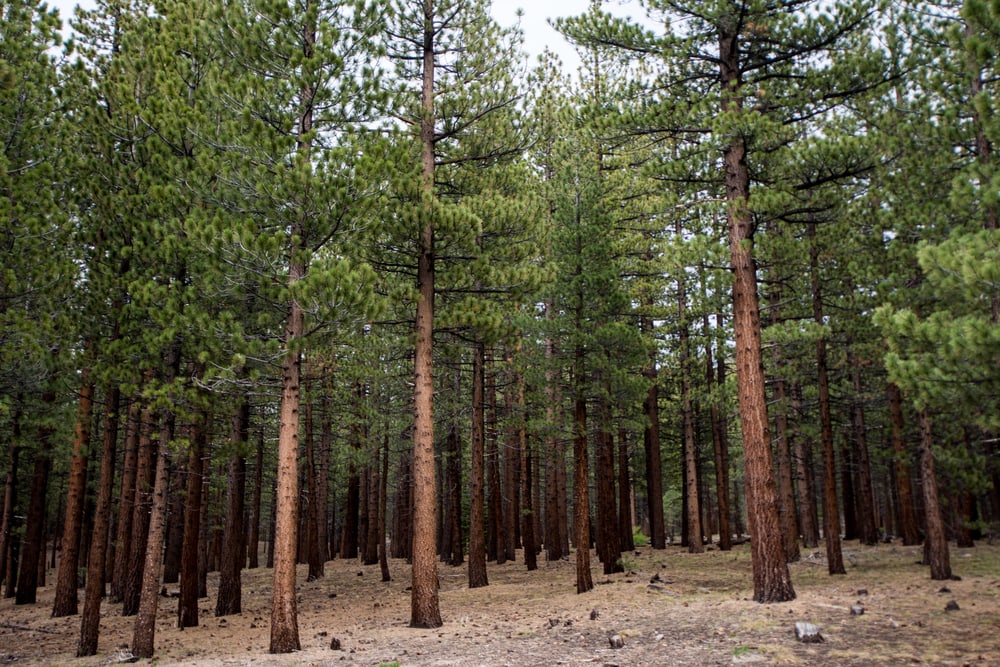
Uses
Of all the trees utilized by people, pine is one of the most important. Pine trees are utilized for a variety of different purposes, including timber and pulp. Their timber is often extremely dense, making them better candidates for use as construction material. Pine wood is highly valued by most carpenters, who craft it into paneling, window frames, furniture, and other items.
Plus, the resin from many pine tree species can be made into turpentine.
However, this wood does not maintain its insect- or decay-resistant traits after harvesting. Therefore, timber is usually only utilized indoors. Outside, it may rot quickly.
Pine trees can be harvested after about 25 years. Specially grown pine trees are utilized as sawing timber, which is often used to frame houses. Imperfect trees are often removed before 25 years to allow the other trees to grow faster. These young trees can be left in the forest as fertilizer or turned into plywood.
Some cultures use the pine tree as a vital source of food. Their nuts can be used for cooking and baking, assuming they come from certain species. In fact, these pine nuts are a vital ingredient in pesto.
In some cases, the white bark under the hardy, the outer bark is edible. This sort of bark can be eaten and has a high vitamin C content. It does not require cooking, though it is also a common ingredient in soups, flours, and stews. Some cultures use it as a thickening substance, similar to flour.
A tea can be made by steeping the leaves. In Asia, needles are also used to create wine. Wine from pine is also made in Greece, though the resin is utilized in this case.
 What Are the Differences?
What Are the Differences?
There are several differences between pine, fir, and spruce.
When you’re trying to identify a tree, your first step should be to observe the needles. Pine needles grow in bunches. While the number of needles per bunch will differ, the needles will not be spread throughout the branch in an even manner. On the other hand, fir and spruce needles will grow individually from the branch.
Therefore, if you’re dealing with pine, you should know after a brief look. However, fir and spruce will require a bit more probing.
Next, pull off a needle and roll it between your fingers. Spruce needles roll easily and have four sides. You should be able to feel each side with your finger. Plus, most spruce needles are quite pointy.
On the other hand, fir needles do not roll easily or have sides. They are also not very pointy and may feel softer.
There are a few other differences that may help you, as well. Fir trees are often described as more fragrant than others. However, scents can change based on humidity and temperature, so this isn’t always accurate.
Cones also vary from tree to tree. Pinecones are rigid and rough. Usually, they appear to be made out of wood. The cones of the other trees are not as rough and appear closer to leaves or needles than wood. They bend instead of break.
Based on this information, you should easily be able to ID different trees. Telling individual species is more difficult, though. Therefore, don’t try to forage from any tree until you know the exact species, as there are poisonous conifers out there that cannot be made into trees.
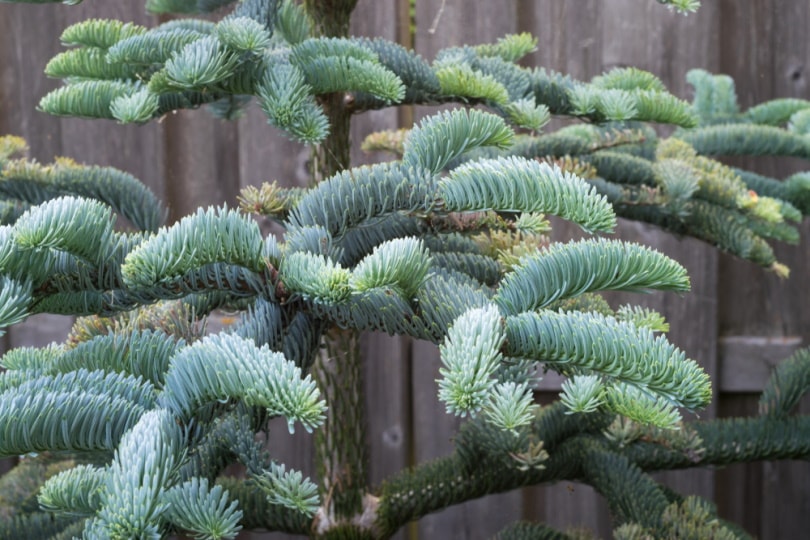
Which Tree is Best?
It depends largely on what you’re using the tree for. Generally, pine wood is better than fir or spruce. It is much more solid and used for a variety of carpentry projects. However, spruce is the next best option. Fir is never used for construction, as the timber is low-quality.
However, fir trees are used for aesthetic purposes more often than the other two types. You can find many fir trees specifically bred for landscaping purposes. Plus, fir trees are usually more fragrant, which makes them a common Christmas tree choice, too.
No tree is particularly better than the other at all things, so your intent matters a lot.
 Conclusion
Conclusion
Fir, spruce, and pine trees may all be conifers, but they differ a lot from one tree to another. For this reason, we highly recommend taking the time to get to know each tree separately. With some basic knowledge, telling them apart is pretty easy. Pine trees have woody cones and needles that grow in bunches. Fir trees have flat needles that don’t roll well between your fingers, while spruce needles are square.
With just these tidbits of information, identifying each of these trees is pretty straightforward. However, telling exact species apart can be more challenging.
Featured Image Credit: Left (Spruce) Leonid S. Shtandel, Shutterstock, Middle (Fir) Peter Turner Photography, Shutterstock, Right (Pine) Weloveyou, Shutterstock
Contents
